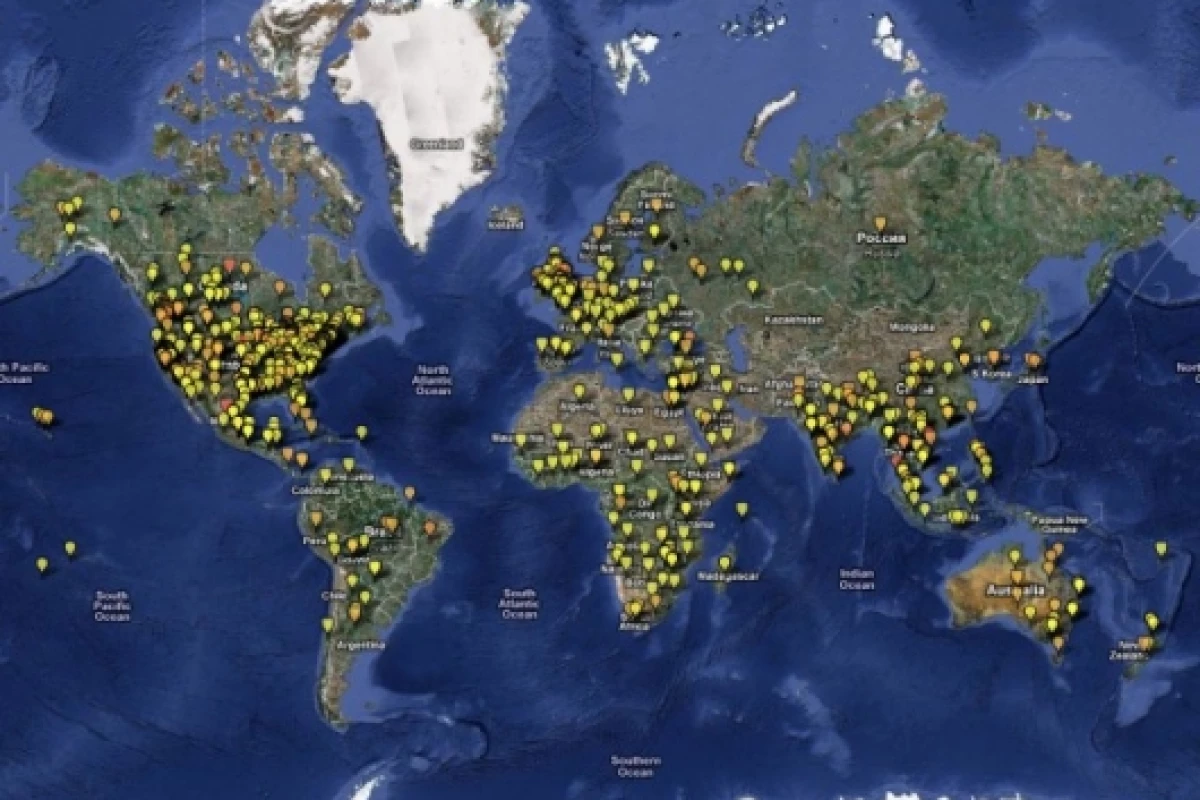May 15, 2009 Tapping the Internet – including personal Web searches, news reports, blogs, chat rooms and social networking sites – is fast becoming a way to get a complete, up-to-the-minute view of public health threats, say researchers from the Informatics Program at Children’s Hospital Boston (CHIP) in a Perspectives article published Online First by The New England Journal of Medicine on May 7, 2009. In an accompanying sidebar, they describe the use of HealthMap.org – a freely available Web site that aggregates, categorizes, filters and displays real-time information on emerging infectious diseases – in tracking the current H1N1 swine flu outbreak.
HealthMap, developed by two of the authors – John Brownstein, PhD, assistant professor at CHIP, and Clark Freifeld, a research software developer at CHIP and a PhD student at the MIT Media Lab – mines informal electronic information sources (news reports, curated personal accounts, official alerts, blogs and chat rooms) to search for, track and map infectious disease outbreaks. It first began picking up evidence of the H1N1 flu on April 1, weeks before it began to emerge in the English-language public health literature on April 21, the sidebar notes. “The practice of mining the Internet for public health surveillance purposes has quickly emerged as a valuable way to support and enhance the traditional public health infrastructure,” says Freifeld. “News reports in particular can be a valuable resource for information as inherently the media has the ability to saturate towns, cities and communities where public health officials may or may not be present and report on potential disease outbreaks.” Brownstein, Freifeld and their co-author Lawrence Madoff, MD, editor of ProMED-mail, also note the advent of social networking services like Twitter, which can offer quick, easy-to-access communications about emerging disease threats.
“Web 2.0 services like Twitter and Facebook are enabling people to become more engaged in public health, which is exciting to see,” says Brownstein, “but it will be important that the information provided on these sites is analyzed and used appropriately to ensure its accuracy and that it does not cause unnecessary distress or panic.” Brownstein and Freifeld are developing ways to evaluate, triage and filter alerts so as not to raise inappropriate alarms. Shortly after the onset of the H1N1 outbreak, Brownstein and Freifeld set up a HealthMap Twitter feed to distribute relevant news to the public in real-time. Initially the feed had 80 followers. Less than a week later, its followers had amassed to 4,000+. Visitors to the HealthMap Web site jumped from 10,000 unique visitors a day to as many as 150,000 a day following the outbreak of the virus.
Since its founding in 2006, HealthMap has tracked information for a number of other high-profile outbreaks, including jalapeño-related salmonella outbreak in the U.S., the emergence of avian flu across the globe and the deli-meat related listeria outbreak in Canada. Daily users include the World Health Organization, the Centers for Disease Control and Prevention, U.S. Department of Homeland Security, UK Health Protection Agency, the European Centre for Disease Prevention and Control, and other public health officials and international travelers. Copies of the Perspectives piece and sidebar are available on NEJM.org, which also features an interactive HealthMap page that maps confirmed or suspected cases of the H1N1 virus internationally. Children's Hospital Boston is home to the world's largest research enterprise based at a pediatric medical center, where its discoveries have benefited both children and adults since 1869. More than 500 scientists, including eight members of the National Academy of Sciences, 11 members of the Institute of Medicine and 13 members of the Howard Hughes Medical Institute comprise Children's research community. Founded as a 20-bed hospital for children, Children's Hospital Boston today is a 396-bed comprehensive center for pediatric and adolescent health care grounded in the values of excellence in patient care and sensitivity to the complex needs and diversity of children and families. The hospital is also the primary pediatric teaching affiliate of Harvard Medical School.




